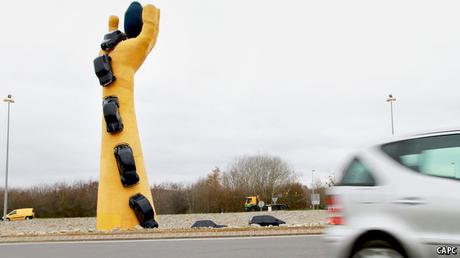 The rond-pointlessness of existence
The rond-pointlessness of existence A TRAFFIC intersection may not seem an obvious subject for metaphysical reflection. But in France, few aspects of life escape philosophical investigation. Now it is the turn of the roundabout, a humble road-junction improvement which is invading the French landscape and unsettling the order of things. Uncommon in France a generation ago, they number some 30,000 today—more than in Britain, which invented the modern version—and an estimated 500 more are built each year. According to a French radio programme, they are not merely a tool for traffic management and road safety, but “an example of when the absurd becomes banal.”
It was a French town planner and architect, Eugène Hénard, who in the early 1900s invented what is officially known as a carrefour giratoire (gyratory crossroad). New York built the first, Columbus Circle, in 1905. Two years later, Hénard installed his version in Paris, designed to circumnavigate the Arc de Triomphe from the star of avenues that lead to it, which were laid out by Baron Haussmann in the mid-19th century. To this day…
The Economist: Europe

